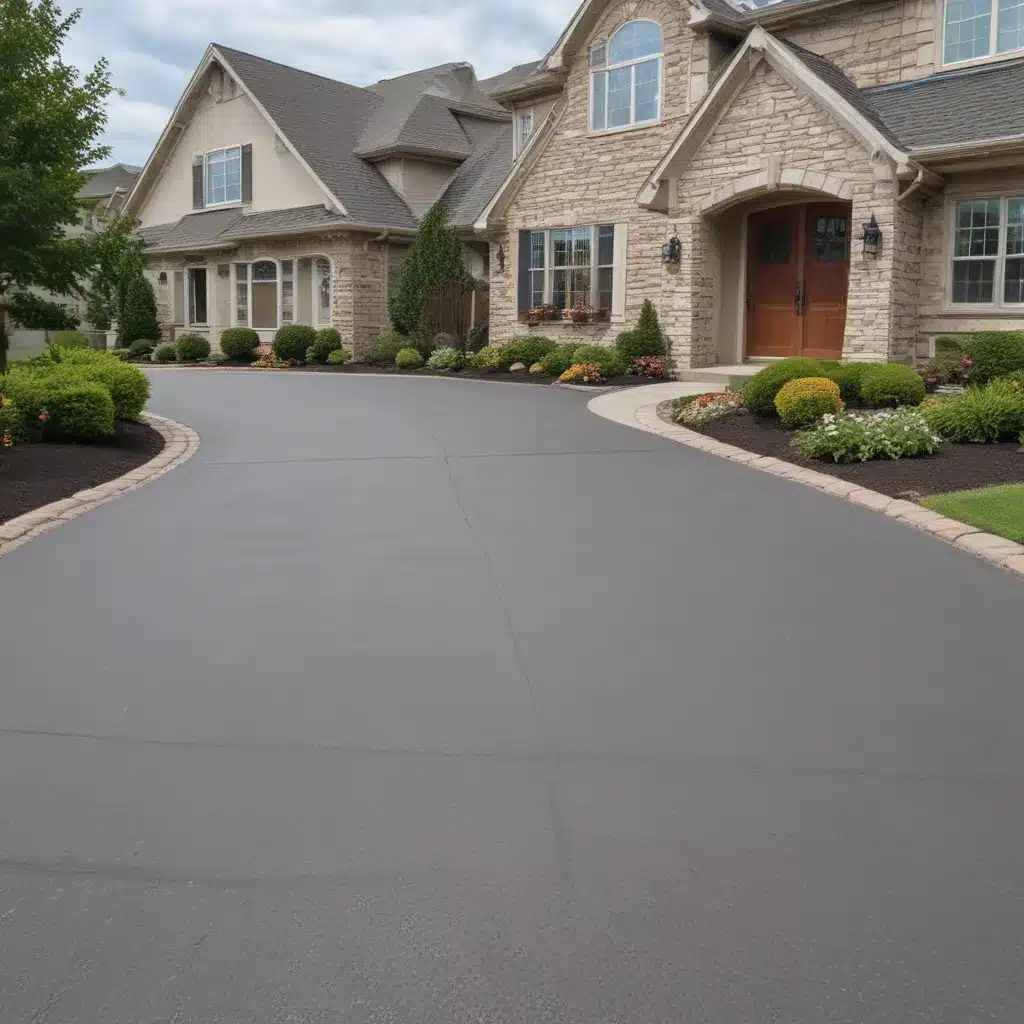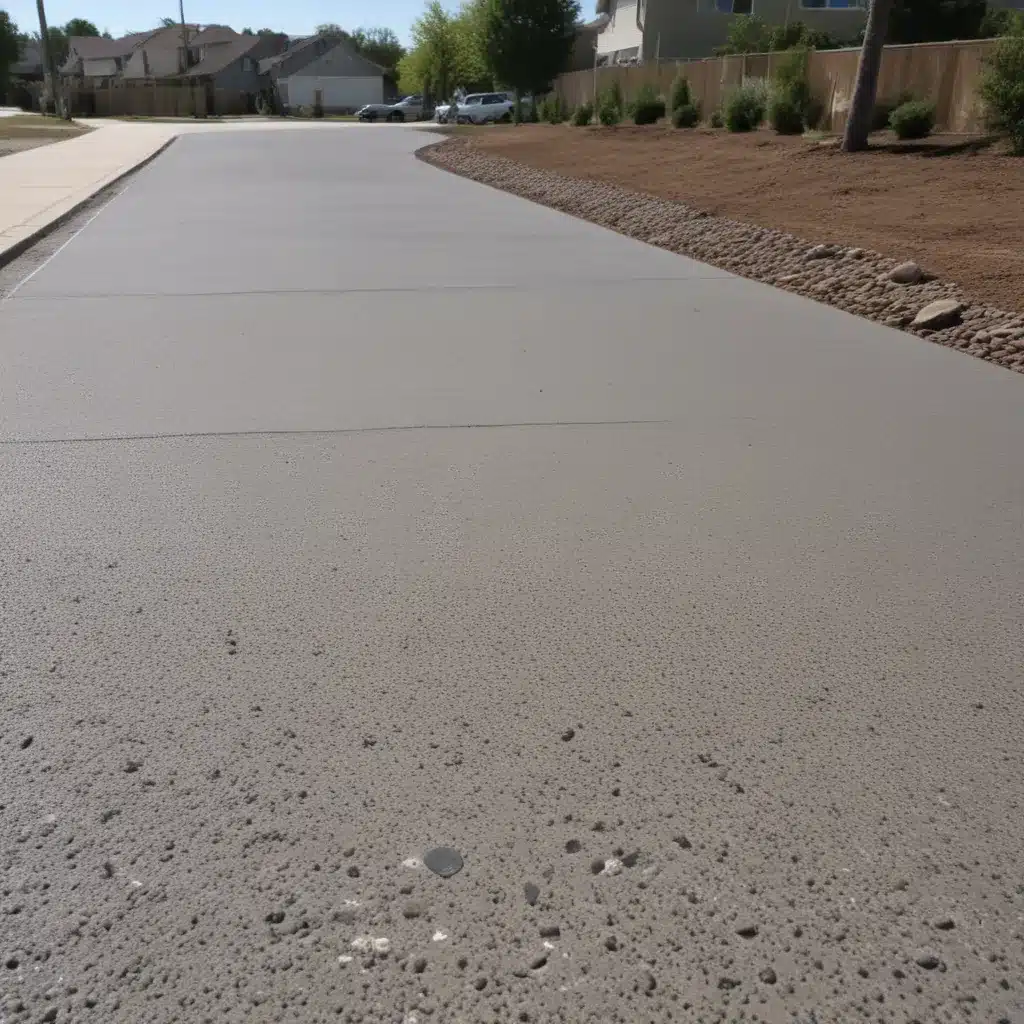The Eternal Driveway Dilemma
As a driveway services professional with over a decade of experience, I’ve seen it all – from the pristine, freshly paved driveways that make my heart swell with pride, to the cracked, uneven monstrosities that make me want to weep. But one question that often plagues homeowners and driveway enthusiasts alike is: what material is best for driveway edging? Should you go with the timeless elegance of stone, the rustic charm of brick, or the no-nonsense durability of concrete? Well, pull up a chair, grab a cup of coffee (or something stronger, depending on how passionate you are about this topic), and let’s dive into the pros and cons of each material.
The Stone-Cold Truth About Driveway Edging
Ah, stone – the quintessential choice for driveway edging, don’t you think? There’s just something about the way it seamlessly blends with nature, effortlessly elevating the overall aesthetic of your outdoor space. But let’s not get carried away just yet. What are the actual benefits of using stone for your driveway edging?
For starters, stone is an incredibly durable and long-lasting material. I’m talking about the kind of longevity that would make a tortoise blush. With proper installation and maintenance, a stone driveway edging can easily withstand the test of time, shrugging off the wear and tear of daily use, as well as the occasional wayward vehicle or errant bicycle. And let’s not forget about the natural beauty of stone – each piece is unique, with its own distinct patterns and hues that can add a touch of rustic elegance to your driveway.
But it’s not all sunshine and rainbows, my friends. While stone may be the Rolls-Royce of driveway edging materials, it also comes with a hefty price tag. Installing a stone driveway edging can be a significant investment, and the costs can quickly add up, especially if you’re working with a larger driveway. And let’s not forget about the labor-intensive nature of the installation process – it’s not something you can just slap together in a weekend. You’ll need to carefully plan and execute the project, making sure that each stone is properly positioned and secured.
Brick-tastic Driveway Edging
Now, let’s shift our focus to the humble brick – the workhorse of the driveway edging world. Brick may not have the same natural elegance as stone, but it more than makes up for it with its sheer durability and versatility.
One of the biggest advantages of using brick for your driveway edging is its affordability. Compared to stone, brick is generally a more budget-friendly option, making it an attractive choice for homeowners who want to add a touch of style to their outdoor space without breaking the bank. And when it comes to installation, brick is relatively straightforward, allowing you to tackle the project yourself or hire a professional at a more reasonable cost.
But the benefits of brick don’t stop there. Brick is also incredibly resilient, able to withstand the elements and the occasional bumps and scrapes that come with daily use. And let’s not forget about the aesthetic appeal – brick can lend a warm, charming vibe to your driveway, complementing a wide range of architectural styles and landscaping designs.
However, it’s not all sunshine and bricks, as they say. One potential downside of using brick for your driveway edging is that it may not have the same timeless elegance as stone. Depending on your personal preferences and the overall style of your home, brick may not be the perfect fit. Additionally, while brick is generally low-maintenance, it can still be prone to cracking and chipping over time, requiring occasional repairs or replacements.
The Concrete Conundrum
And now, we arrive at the final contender in the driveway edging material showdown: concrete. Now, I know what you’re thinking – “Concrete? Really? Isn’t that a little…boring?” Well, my friends, let me tell you, concrete has a lot more to offer than meets the eye.
One of the biggest advantages of using concrete for your driveway edging is its sheer durability. Concrete is an incredibly robust material, able to withstand the rigors of daily use, the elements, and the occasional errant vehicle or wayward bicycle with ease. And let’s not forget about the ease of installation – concrete can be poured and shaped to your exact specifications, making it a relatively straightforward and cost-effective option.
But the benefits of concrete don’t stop there. Contrary to popular belief, concrete can also be quite aesthetically pleasing. With a wide range of coloring and finishing options available, you can create a driveway edging that perfectly complements the overall style of your home and landscaping. And let’s not forget about the low-maintenance aspect of concrete – once it’s properly cured and sealed, you can pretty much forget about it, save for the occasional cleaning or touch-up.
However, it’s important to note that concrete does have its drawbacks. While it may be a durable and practical choice, it can sometimes lack the natural charm and elegance of stone or brick. Additionally, concrete can be prone to cracking and chipping over time, especially in areas with extreme temperature fluctuations or heavy use. And let’s not forget about the potential environmental impact – concrete production can be a rather energy-intensive process, making it a less eco-friendly choice compared to some of the other options.
The Verdict: Which Material Reigns Supreme?
So, after all this talk about the pros and cons of each material, you’re probably wondering: which one is the best choice for my driveway edging? Well, the answer, as you might have guessed, is: it depends.
If you’re looking for the ultimate in durability and longevity, and you’re willing to invest the time and money, then stone is likely the way to go. Its natural beauty and timeless elegance make it a true showstopper, and it’s sure to impress your neighbors (and maybe even a few passersby).
On the other hand, if you’re working with a tighter budget and you’re looking for a more affordable option that still offers plenty of style and charm, then brick might be the way to go. It’s a great middle ground between the high-end elegance of stone and the utilitarian practicality of concrete.
And speaking of concrete, if you’re looking for a durable, low-maintenance option that can still be customized to suit your tastes, then it might be worth considering. Just be mindful of the potential drawbacks, and make sure to do your research to find a reputable contractor who can ensure a high-quality installation.
Ultimately, the choice of driveway edging material comes down to your personal preferences, your budget, and the overall style and aesthetic of your home and landscaping. But no matter which route you choose, one thing is certain: a well-designed and properly installed driveway edging can make all the difference in the curb appeal and functionality of your outdoor space.
Now, if you’ll excuse me, I’m off to daydream about my dream driveway – complete with a stunning stone edging, a smooth concrete surface, and maybe even a few strategically placed brick accents just for good measure. After all, a driveway enthusiast’s work is never done!





